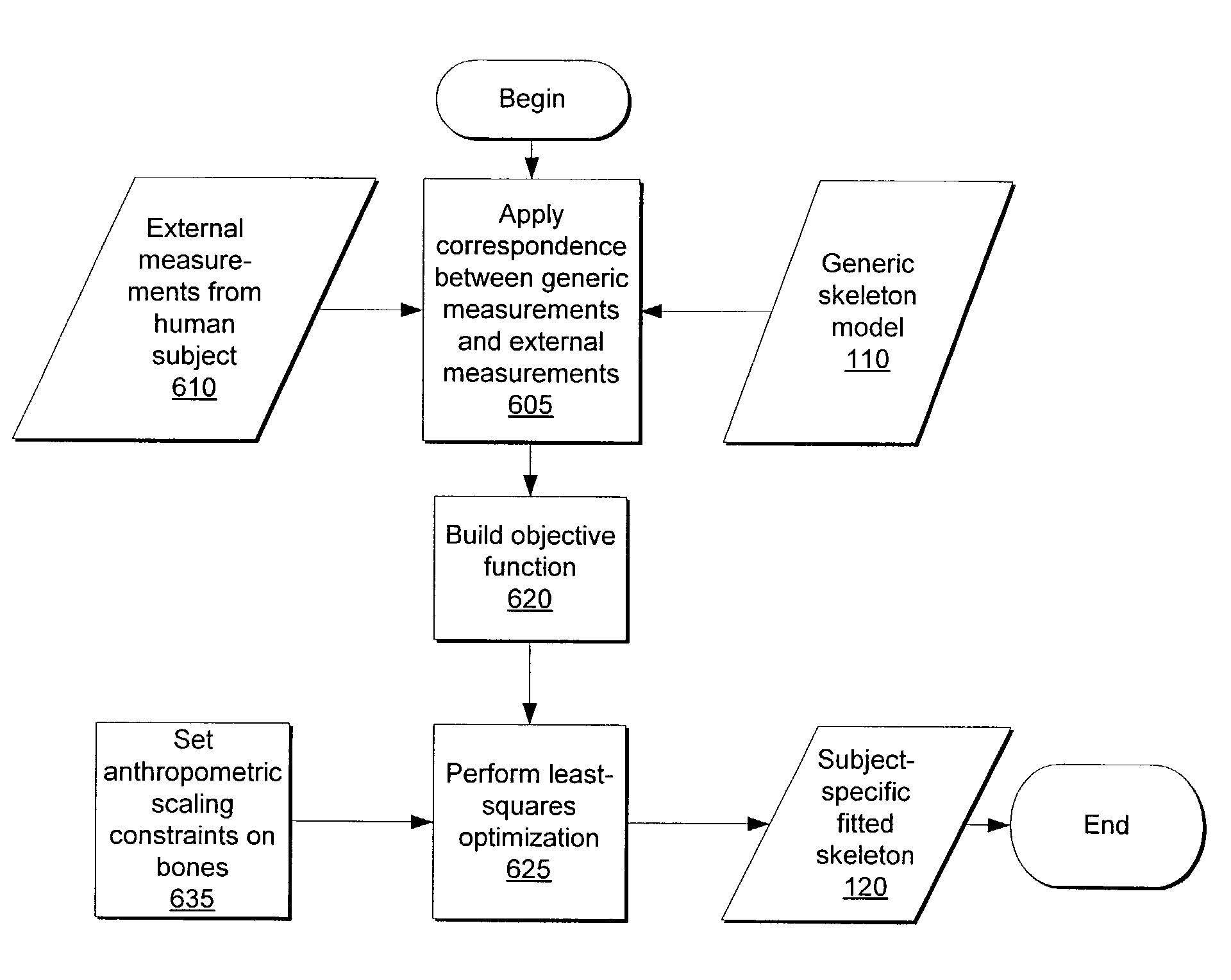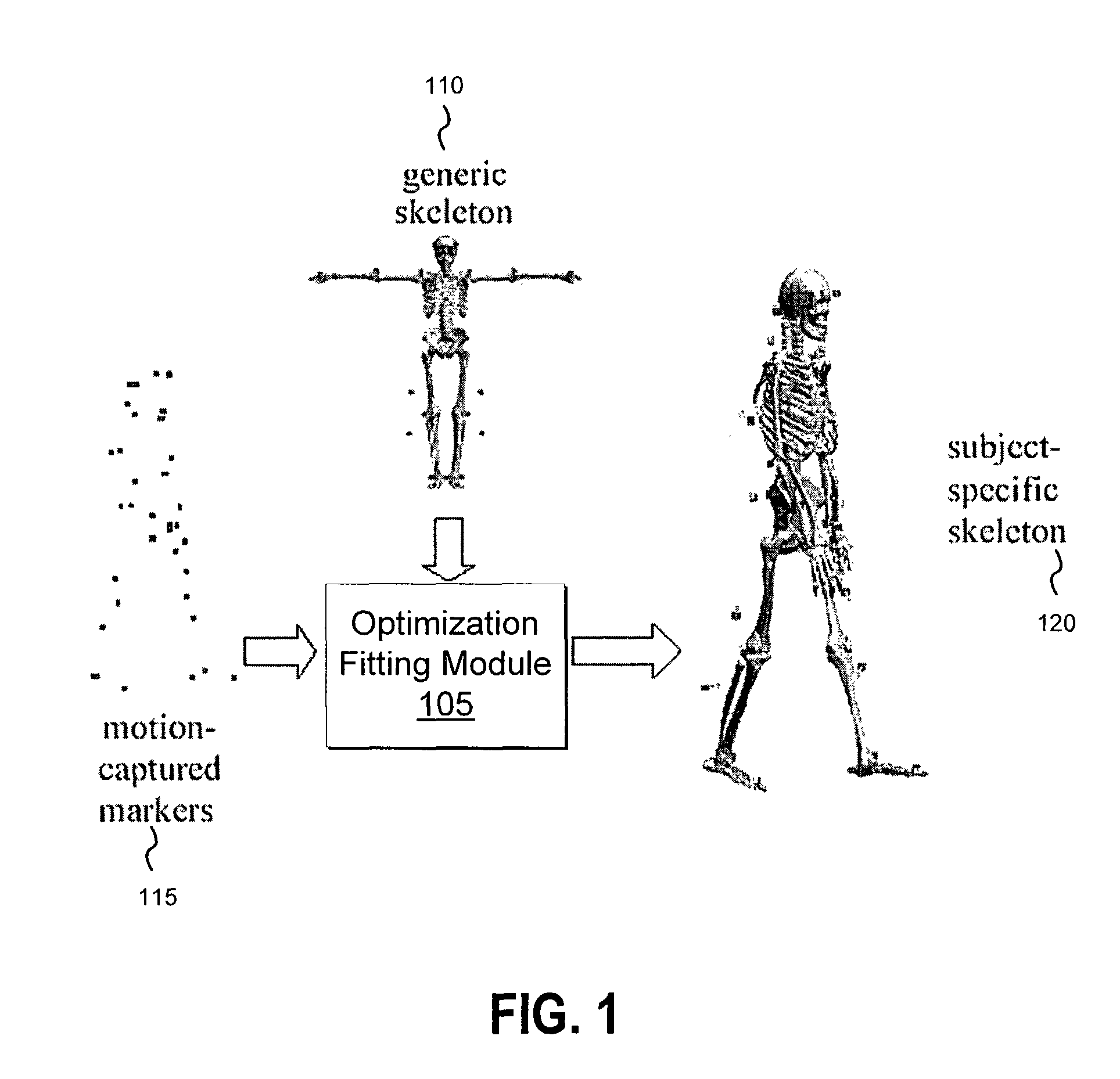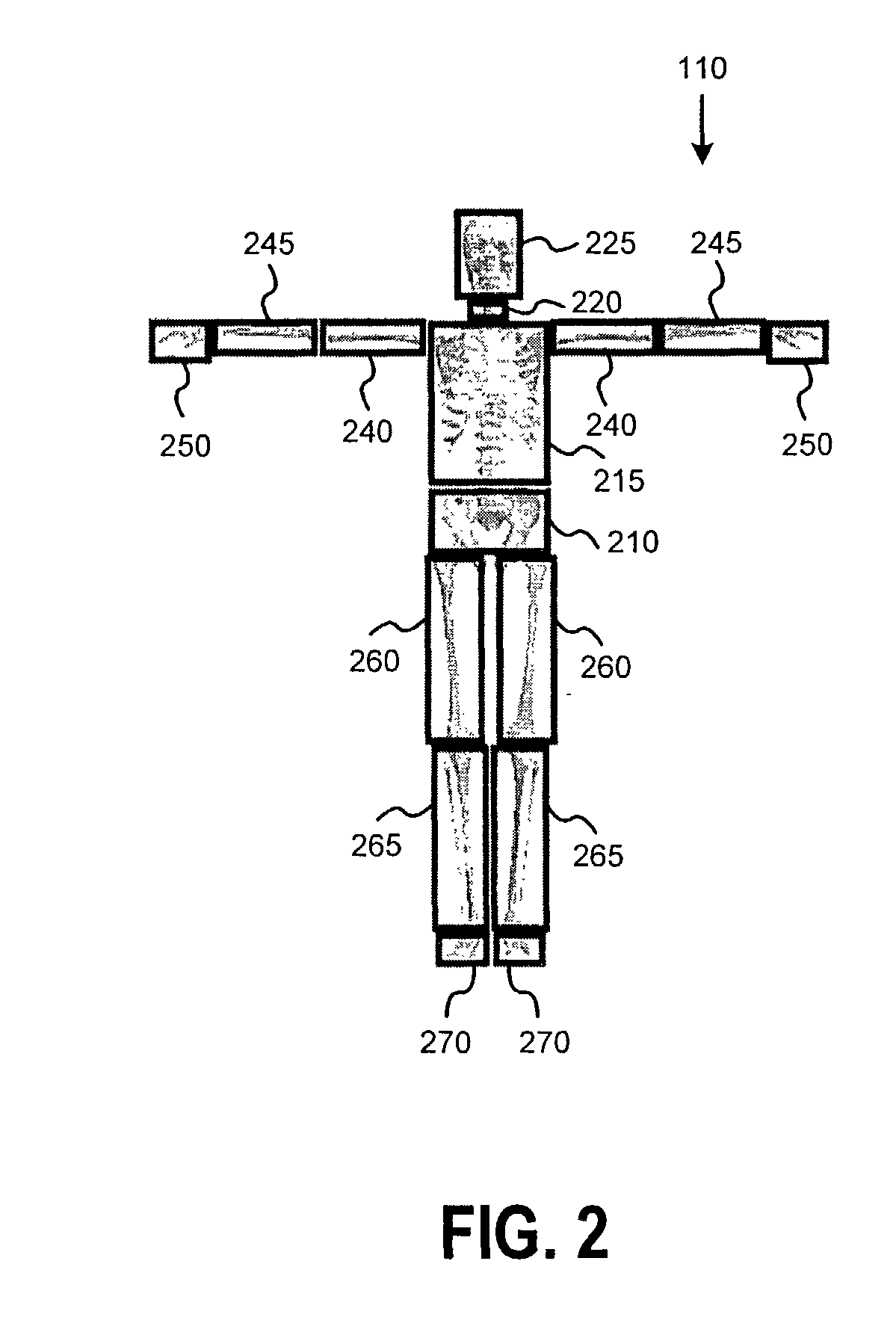Anthropometry-based skeleton fitting
- Summary
- Abstract
- Description
- Claims
- Application Information
AI Technical Summary
Benefits of technology
Problems solved by technology
Method used
Image
Examples
Embodiment Construction
[0023]Embodiments of the present invention are now described with reference to the accompanying figures, where like reference numerals indicate identical or functionally similar elements. Also in the figures, the left most digit of each reference numeral corresponds to the figure in which the reference numeral is first used.
[0024]A. Skeleton Fitting Process Overview
[0025]Subject-specific skeleton models can be constructed from data measured from real human subjects. The subject-specific skeleton can be used for developing accurate human simulations of individuals. Anthropometric information for an individual can be obtained from various sources, such as marker positions from motion-captured sessions or length measurements between various identifiable landmarks on a person. When compared with the direct measurement of limb lengths, the marker positions of a motion-captured sequence contain more information about the three-dimensional shapes of limbs. Marker positions can provide info...
PUM
 Login to View More
Login to View More Abstract
Description
Claims
Application Information
 Login to View More
Login to View More - R&D
- Intellectual Property
- Life Sciences
- Materials
- Tech Scout
- Unparalleled Data Quality
- Higher Quality Content
- 60% Fewer Hallucinations
Browse by: Latest US Patents, China's latest patents, Technical Efficacy Thesaurus, Application Domain, Technology Topic, Popular Technical Reports.
© 2025 PatSnap. All rights reserved.Legal|Privacy policy|Modern Slavery Act Transparency Statement|Sitemap|About US| Contact US: help@patsnap.com



